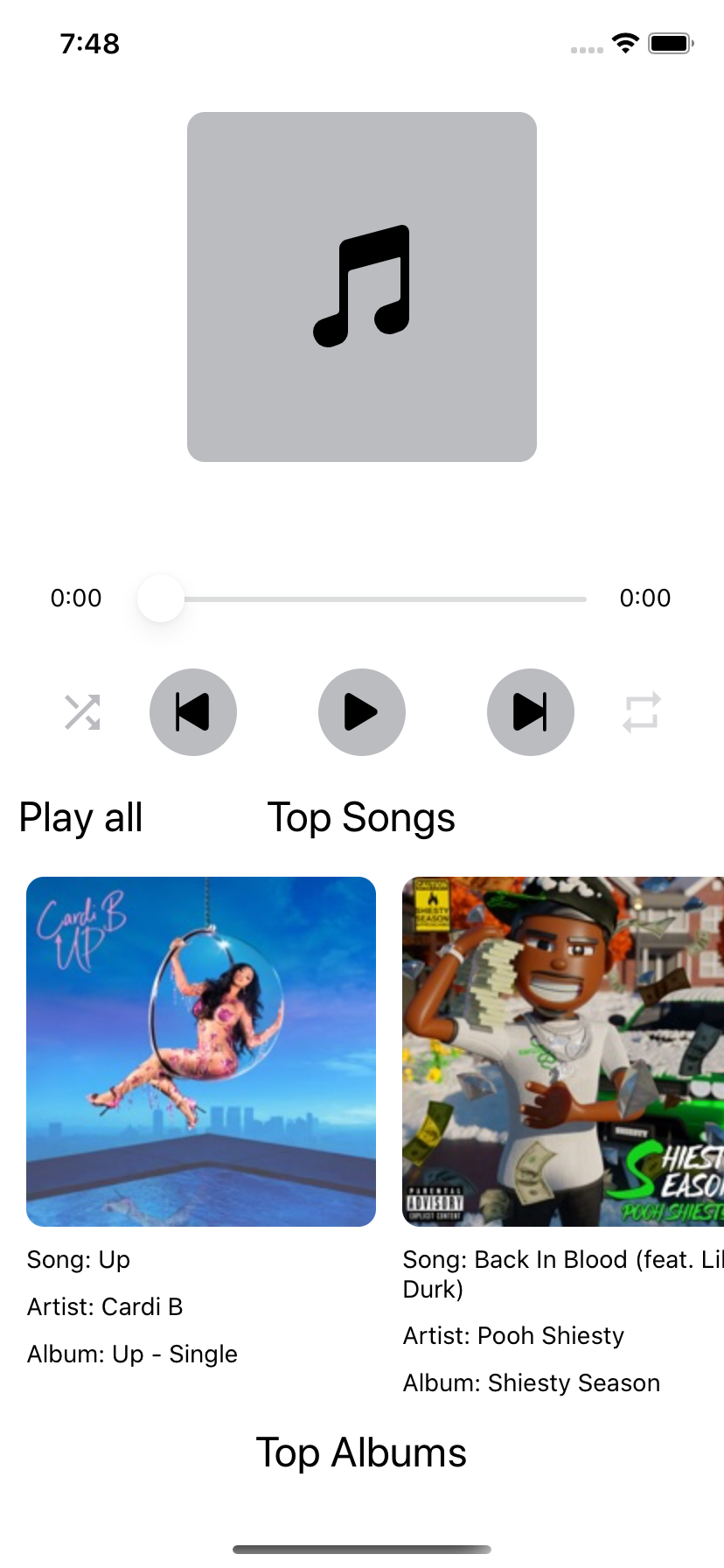

This is a highly customizable player that stays out of your way while looking clean, perfect for those who are into theming their device a specific way. For $3.50, you get a full-featured local music player that offers light and dark themes, an equalizer, a bass boost, a virtualizer, and support for all of the music file types you can dream of. Today's roundup is comprised of many premium apps, and BlackPlayer EX is one of the top choices as it's premium out of the box, thanks to an upfront price.
#SETVOLUME MUSICPLAYER ANDROID FREE#
The app is free to try for 15 days, so you can thumb through everything it does before committing for $5. Poweramp is a robust app, with even more features buried in the Settings. If you're putting on a party-even if it's just you alone-you can choose from several animated visualizations that appear over the interface or take over your screen as an ambient display of sorts. It's easy to find the menu item you're looking for, whether you're fielding playlists, streams, or all songs. If you want to listen to music loudly from your phone, you can select the "Speaker (Loud)" setting in the equalizer to rapidly increase the gain and get loud results. Bass heads can adjust the bass and treble from a decidedly user-friendly equalizer interface, and there is even Direct Volume Control (DVC) for extended dynamic range and deeper bass.
#SETVOLUME MUSICPLAYER ANDROID ANDROID#
It offers Android Auto, Chromecast, and Google Assistant support to bridge the gaping hole left by Play Music's untimely departure. Along with playing a myriad of local music file types, it lets you import HTTP streams from sites like Digitally Imported. Set audio attributes for your MediaPlayer before calling prepare() or prepareAsync(): tAudioAttributes(audioAttributes.build()) įinally set a on completion listener for mediaPlayer and change the volume to its default: tOnCompletionListener(new MediaPlayer.Poweramp is as powerful as its name suggests. Store current volume and set stream value to its Maximum value: int currentVolume = Objects.requireNonNull(am).getStreamVolume(AudioManager.STREAM_NOTIFICATION) Īm.setStreamVolume(AudioManager.STREAM_NOTIFICATION, am.getStreamMaxVolume(AudioManager.STREAM_NOTIFICATION), 0) ĭefine AudioAttributes.Builder and set the stream type for it: AudioAttributes.Builder audioAttributes = new AudioAttributes.Builder() ĪtLegacyStreamType(AudioManager.STREAM_NOTIFICATION) This one has a bad effect too and it is that you change the entire stream volume of the user device!Īnd user doesn't like this, so you should change it back to the default value.ĭefine your AudioManager: AudioManager am = (AudioManager) getSystemService(Context.AUDIO_SERVICE)


SetVolume() doesn't work properly, so you should set stream volume by AudioManager. Thanks, for your advice, it was really helpful. To set other Volumes like Ringer, use STREAM_RING. Note: This only sets Media (Music) Volume to the max. Make sure that you request MODIFY_AUDIO_SETTINGS permission in your application's manifest. Now, play your media object as a Music Stream : mp.setAudioStreamType(AudioManager.STREAM_MUSIC) AudioManager am = (AudioManager) getSystemService(Context.AUDIO_SERVICE) Īm.setStreamVolume(AudioManager.STREAM_MUSIC, am.getStreamMaxVolume(AudioManager.STREAM_MUSIC), 0) The global volume of a stream type (music in this case) can be changed using the following code. I think using alarm stream would not be a good option if you are playing audio casually. Useful Remark: I found many answers on for setting max volume level or changing volume, most of them used alarm stream (STREAM_ALARM) to do so. I found a solution that simply sets the global media volume. It doesn't change the global media volume which is what I wanted to accomplish originally. tVolume(float, float) sets the volume of the given MediaPlayer instance.


 0 kommentar(er)
0 kommentar(er)
